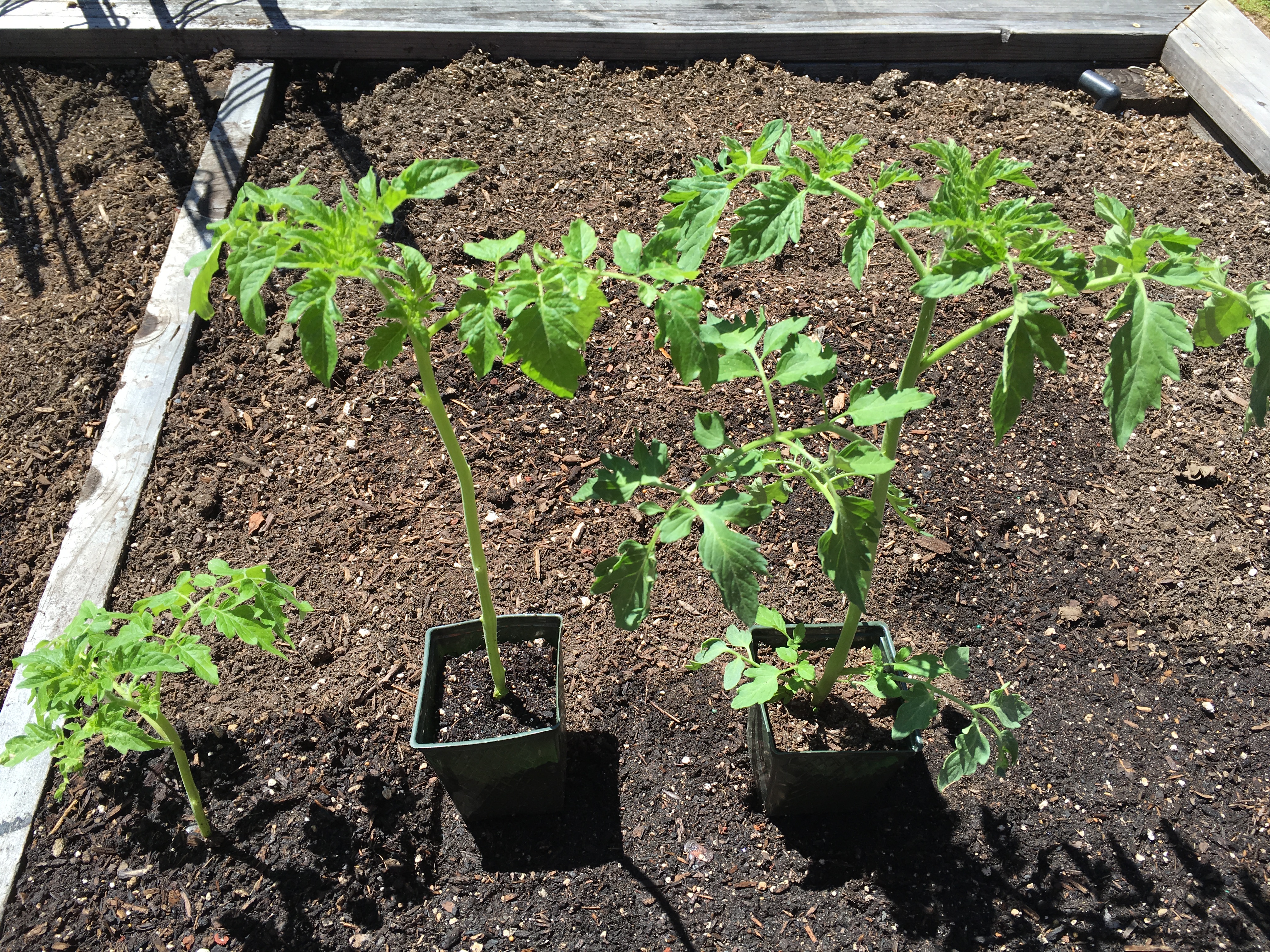Apr 27, 2016 | Rebecca in the Mercury News
To ensure that your prized tomatoes are able to put their “best roots” forward, pinch before you plant. Seasoned gardeners know that pinching off all the lower leaves and leaving just the top 2 to 3 sets will make for a much better plant. Allow the “wounds” to heal for a few days; then plant in a deep hole or sideways in a trench so that only the reaming leaves are above the soil. This allows roots to form where the leaf nodes were, resulting in a much stronger, more stable plants as it grows.
Prepare your soil by mixing in 2-3 inches of compost. Add in some organic fertilizer if your soil is lacking in nutrients, or not that healthy. For raised beds or containers, add in some fresh potting soil and slow-release organic fertilizer to ensure plants have the nutrition they need to grow and produce. Choose area that gets at least 6-8 of sunlight per day. To avoid problems with fungus and disease, don’t plant in an area where you have grown nightshades (tomatoes, eggplants or peppers) in the last 3 years. This will help to avoid pesky problems with Fusarium wilt and Verticillium wilt – two common fungal diseases that affect tomatoes.
Fusarium wilt invades the plant through its roots. It is a serious problem that causes branches and leaves to become yellow and wilt; infected plants usually die. Use plants (labeled F) to avoid this problem.
Verticillium wilt causes leaves to turn from yellow to brown and fall off. The infection usually appears in a V-shaped pattern. Although it seldom fatal, it reduces vigor and yield. Due to significant leaf drop, sun damage to the fruit can occur. Buy plants labeled V or VF to avoid this issue.
Blossom end rot is caused by a calcium deficiency in the fruit. Symptoms first appear as a water-soaked spot near the blossom end of the fruit. The spot will become brown, leathery and sunken and may cover half of the fruit’s surface. There is no cure for an affected plant, but the fruit is still edible; just cut off the damage and enjoy the rest. Regular and deep irrigation will help avoid this problem.
One of the most common tomato ailments is tobacco mosaic virus. It causes light green, yellow or white mottling on leaves; leaves may become stringy or distorted. It is usually caused from contact by those who use tobacco products. Don’t smoke or allow tobacco in or near your garden. Look for disease resistant plants (labeled T).
Tomato and/or tobacco hornworms cause extensive damage to both the plant and fruit. Look for visible black droppings and/or eggs on the leaves. The worms can grow up to 4 inches in length. It is best to hand pick and discard them. If necessary, spray with Bacillus thuringiensis (BT).
Russet mites are minute pests that can’t be seen by the naked eye. Use a hand lens to identify their yellowish, conical-shaped bodies. They feed on leaves, stems and fruit; if not controlled they will usually kill the plant. Apply sulfur (dust or spray) to young plants and avoid planting near petunias, potatoes, or other solanaceous plants that are often a host for the pest.
Blossom drop is caused by environmental issues: insufficient pollination, lack of water, extremely high or low temperatures, even smog – conditions we really can’t control.

 Being an avid gardener, born and raised in Indiana, I feel incredible blessed to live in sunny California & be able to grow my own food all year-round! I write a monthly garden column for the San Jose Mercury News & am constantly striving for tips & ideas on how to live a little more gently in regards to ourselves, our planet & each other – basically sustainability we can live with! As a
Being an avid gardener, born and raised in Indiana, I feel incredible blessed to live in sunny California & be able to grow my own food all year-round! I write a monthly garden column for the San Jose Mercury News & am constantly striving for tips & ideas on how to live a little more gently in regards to ourselves, our planet & each other – basically sustainability we can live with! As a 



